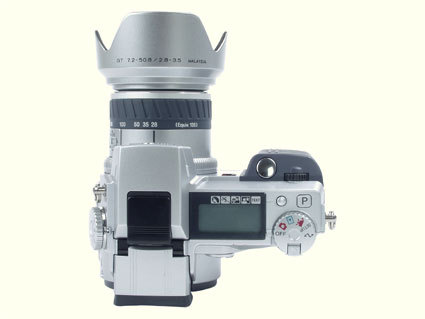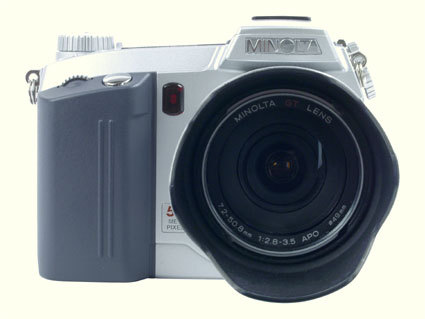Four 5-Megapixel Cameras In Review
Other Features
The usual P, A, S and M modes are all here, plus a few interesting special modes. Portrait mode is designed to render clear-cut faces in soft shades on a hazy background. Sport mode is specifically for moving subjects with an auto-focus follow-up and high shutter speeds. Sunset mode is an unusual one that ensures warm colors. Night Portrait optimizes flash portraits while conserving the ambiance via an illuminated night-time function. Lastly is Text mode, which produces clear black and white images with good contrast.
The Dimage 7 has another, less pleasant, feature. Its power usage is deplorable. Whether you use alkaline or 1600 mA batteries, don't expect them to last more than an hour. Only our 1750 mA batteries bought us a bit more time and allowed us to (briefly) stop worrying about running dry!
Some of you will like the bundled Dimage Image Viewer Utility. This application has two functions. It plays back and converts RAW files and is also a powerful image retouching tool which you can use to correct colors, saturation and histograms, to refine sharpness, etc.
As for its hardware, the Dimage, like many others, has a hot-shoe that's compatible with most studio flashes. The memory slot accepts Compact Flash types I and II. The camera is compatible with IBM Microdrives, as we verified with our 1 GB mini-disk.
Wide Angle Zoom
The Dimage 7 zoom lens possesses all of the positive aspects of its 5 megapixel rivals. Like the E-20, it is controlled by a ring. Its focal length range (7x optical) is greater than the DSC-F707. Like the Nikon Coolpix 5000, this is a wide angle with 28-200mm equivalent to 35mm. Its only drawback is that it is not as bright as the Olympus and the Sony: f/2.8-f/3.5.
Overall, the autofocus is both fast and efficient. It does have a few failings though, especially for short-distance shots in macro mode. This sometimes means that you'll have to use the manual focus, controlled by the ring on the camera body.
Get Tom's Hardware's best news and in-depth reviews, straight to your inbox.

